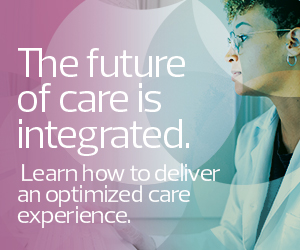At-home acute care is for short-term conditions — such as broken bones, post-surgery recovery or other illnesses — that might typically be managed by in-hospital care.
“Essentially, it’s a level of care above traditional remote monitoring that adds services that would have been delivered in the hospital: occupational or other therapies, nurse visits, nutritional services and so on,” says Rob Havasy, senior director for connected health at the Healthcare Information and Management Systems Society.
Unsurprisingly, these services rely heavily on technology to be successful.
“The technology ranges from devices that track the most basic physiological measurements, such as blood glucose, blood pressure and weight,” Havasy says. “Tablet devices were a real breakthrough. They allowed patients to talk to providers about qualitative symptoms, which may be equally or more predictive than physical measurements.”
The Focus on Health Equity and Quality with At-Home Acute Care
UMass Memorial Health cares for predominantly medically underserved populations in central Massachusetts, Michaelidis says, so designing the program for health equity from the start was critical for success.
So far, the outcomes have been excellent. “We’ve served about 1,500 patients since we took in our first patient in August 2021,” he adds.
Within the first two years of the program, there was an 80 percent to 90 percent drop in patients transferring to nursing homes after a hospital-at-home stay, according to a report by The Boston Globe. The program also found that patients were more satisfied and had lower mortality and hospital readmission rates than patients admitted to the brick-and-mortar hospital.
Once a brief survey helps determine that a patient candidate is a good fit for the program, the patient is transferred to his or her home and met by members of a dedicated mobile nursing team that sets up tablet and health monitoring devices (and a Wi-Fi hotspot, if needed) that are used for telehealth visits.
“Patients have instant access to their care team 24/7,” Michaelidis says. “There’s an ‘I need help’ button on the tablet that connects with a nurse right away, and medical professionals can be at the home in minutes.”
DISCOVER: What’s the future of at-home acute care?
Armbands with sensors transmit heart rate, oxygen level, respiratory rate and skin temperature, which are all continuously monitored in the background by a virtual nursing team.
In the home, patients receive a nurse visit at least twice daily and communicate with a physician via the tablet daily or more often as needed. Other services can include hospital food deliveries and occupational and physical therapy.
Michaelidis credits the federal waiver for the funds to launch and run the program. He is concerned that if the waiver expires after 2024, these promising outcomes will vanish.
“The program gives the patient and family a higher comfort level,” he adds. “When people know the program because they had been previously admitted to it, they ask for it right away in the emergency department. They ask to go home with the hospital-at-home care team.”












